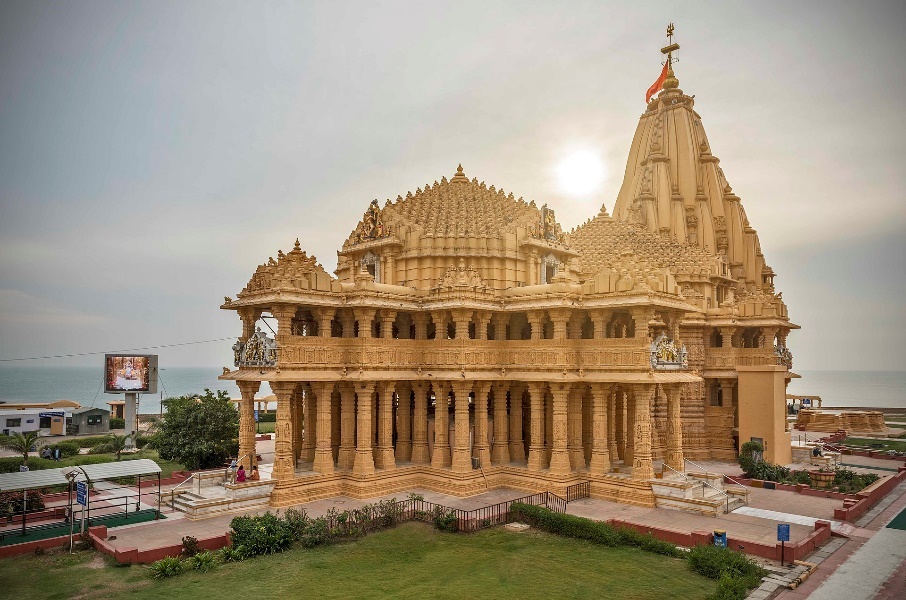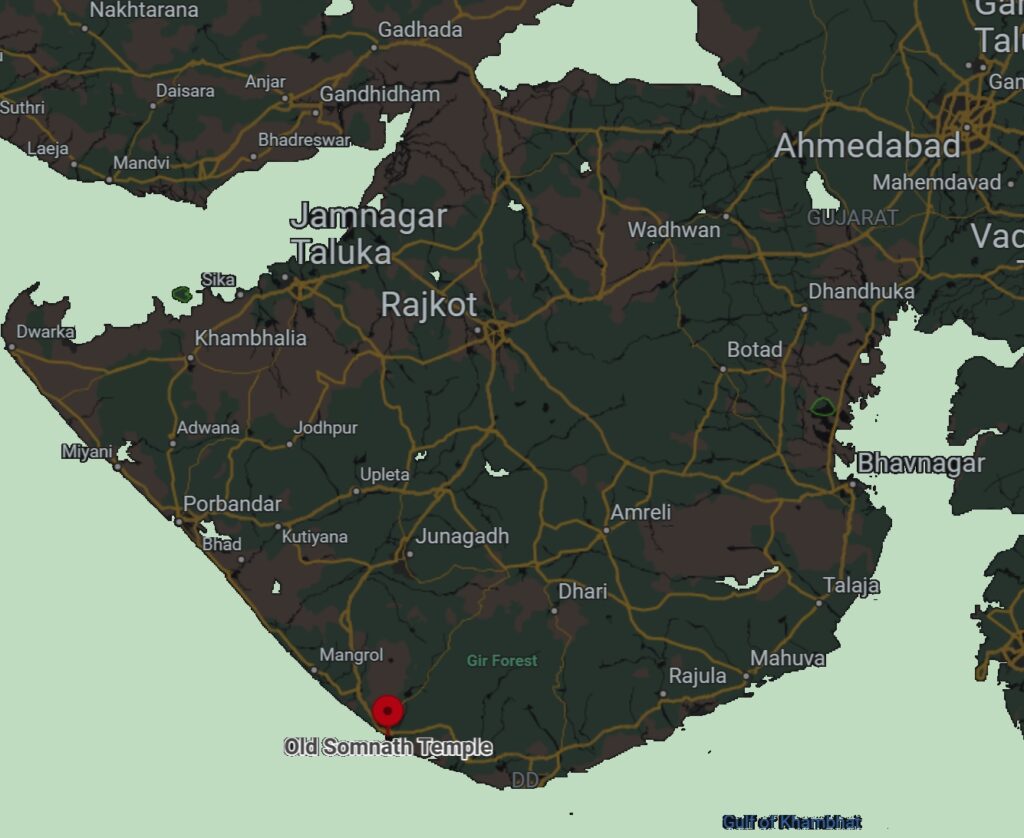Somnath temple
-
Somnath Temple is located in Parabhas Patan in Veraval, Gujarat.


-
It is considered the first among the 12 jyotirlingas shrined of Shiva.
-
The temple is known for being an essential point of interest for the Muslim invader and rulers due to its riches. Its wealth was looted multiple times, starting with Mahmud of Ghazni. Moreover, the temple was reconstructed multiple times after destruction caused by the raiders.
-
History:
-
The Somnath temple is dated between the 10th– and 12th century CE.
-
Per Al-Biruni, the Veraval was an important trading centre with contacts with the Middle East and Southeast Asia during this time. The prosperity resulting from the trade made the Somnath temple rich and famous.
-
-
Religious significance:
-
The temple is believed to have been built by the “Lord of the Soma” or Moon as a mark of devotion to Lord Shiva. Lord Shiva freed Lord Moon from the curse of Saksha Prajapati, the father-in-law of Moon. It is considered as one of the first among the 12 jyotirlinga shrines of Shiva.
-
It is also believed that Lord Krishna was fatally wounded around this place.
-
-
Invasions by Muslim invaders and rulers:
-
1026 CE- Mahmud of Ghazni:
-
The first Muslim attack on the temple was carried out by Mahmud of Ghazni in 1026 CE, during the reign of the Chaulukya ruler, Bhima I. Mahmud looted the temple and broke its jyotirlinga.
-
Al-Biruni, the chronicler in Mahmud’s court, has confirmed the raids of 1026 CE. He observes that Mahmud’s raid’s primary goals were looting and appeasing the moral ideals of a devout Muslim. The tone of his writing reflects criticism of the raids for “ruining the prosperity” of India.
-
Kumarapala (r. 1143–72 CE), the ruler of the Chaulukya (Solanki) dynasty, rebuilt the temple, replacing the wooden structure with a stone structure studded with jewels.
-
-
1299 CE – Ala-ud-din Khalji’s invasion of Gujarat
-
Ulugh Khan-led Khalji’s army invaded Gujarat, ruled by Vaghelas, in 1299. The Somnath city was plundered, and the Somnath temple was desecrated. Several Hindu deity idols belonging to the temple were taken to Delhi.
-
The temple was rebuilt by Mahipala I, a Chudasama king, in 1308 CE.
-
-
1395 CE – Zafar Khan – destroyed the temple.
-
Zafar Khan was the last governor of Gujarat under the Delhi Sultanate. He later founded the Gujarat Sultanate.
-
-
Aurangzeb, too, had issued orders to fully demolish the temple if Hindus revived worship there.
-
-
Sardar Vallabhbhai Patel ordered the reconstruction of the present-day temple (Pran-Pratistha) post-independence (November 13, 1947) after incorporating Junagadh state into Indian territory. Veraval was part of Junagadh state before its integration with India.
-
Temple architecture:
-
The present temple has been constructed in the Maru-Gurjara architecture, also called the Chaulukya or Solanki style.
-
-
-







